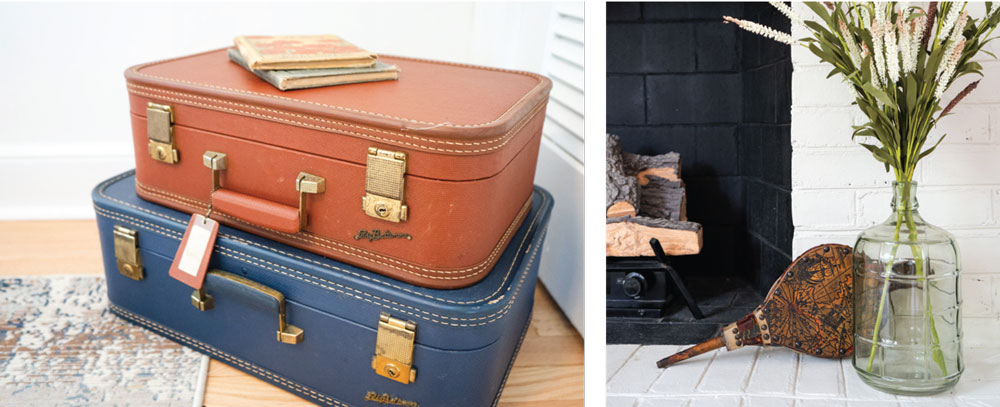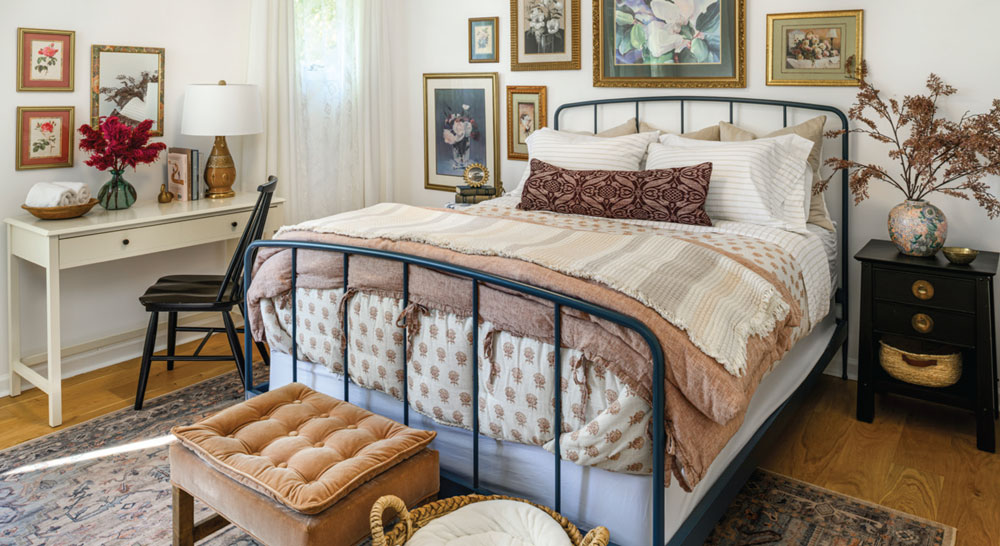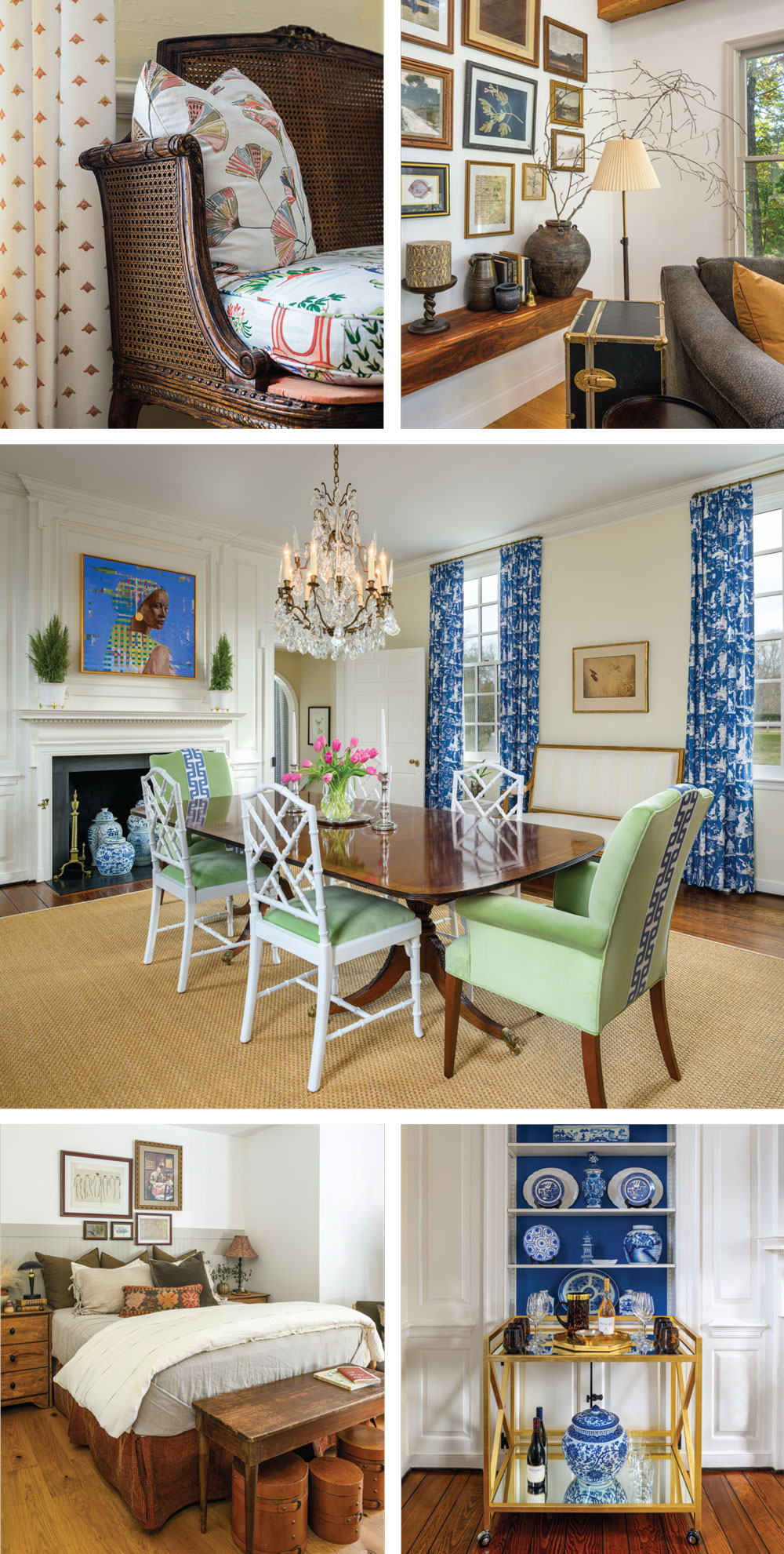CURATING CHARACTER
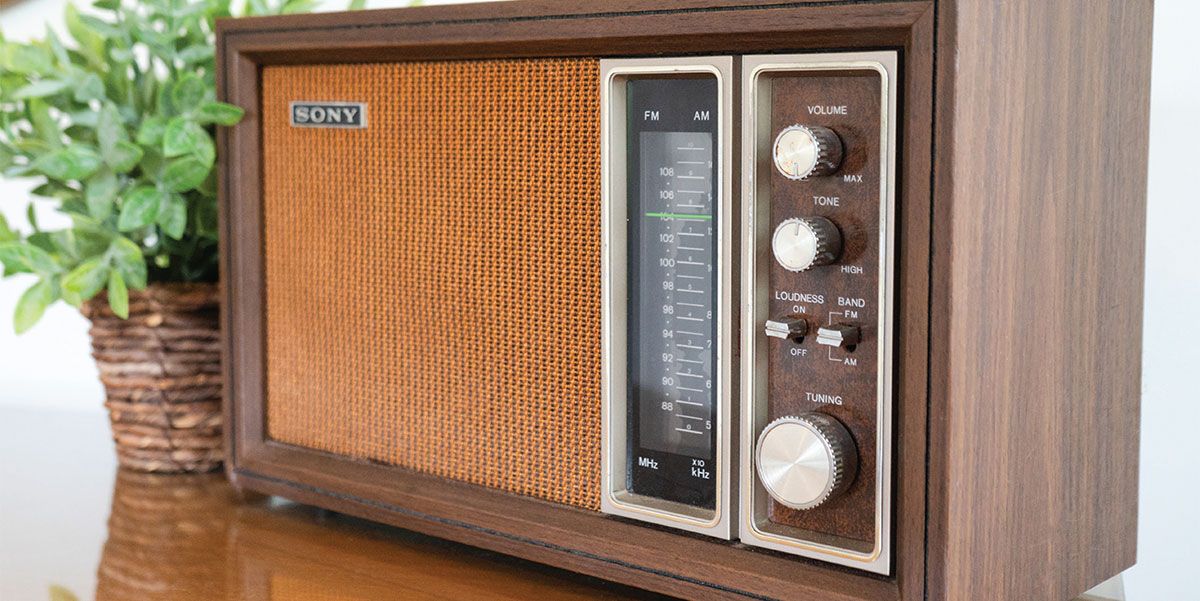
Above Photo: James River Media
In with the old — and the new
Sustainability and “granny chic” are trending design themes, so it’s not surprising that antiques are basking in the spotlight in contemporary homes. Many homeowners, however, struggle with deciding how to place their treasured family heirlooms and vintage finds next to their modern pieces. Layering antique, vintage and modern pieces curates a harmonious yet buoyant aesthetic, connected to the past yet celebrating the present. You don’t have to quarantine your antiques into one side of a room to display sentimental favorites nor purge antediluvian inheritances in a mass-produced extreme makeover. Instead, mix the old and the new to fashion a fresh look that exudes character and transcends time.
When clustered into separate period rooms, antique and vintage furnishings can look downright funereal while modern furnishings border on the banal and monochromatic. When artfully blended together, however, their alchemy is enchanting. TheSpruce.com defines an antique as at least 100 years old; vintage is less than 100 years old but more than 20 years old; and modern design is current or less than 20 years old. Whether circa 18th or 21st century, furnishings and accents from different eras enrich your home’s ambiance with personality and historical context.
For tips to mix the old and new, try dusting off your interior design textbooks and testing some old-fashioned maxims. The “80/20” rule advocates using 80 percent modern pieces and 20 percent antique or vintage pieces when furnishing a room or vice versa, depending upon the epoch that you are accentuating. The “golden ratio” says that filling 60 percent of a room and leaving 40 percent vacant will engender a spacious and airy feel. Finally, the “rule of three” suggests that displaying items in odd numbers kindles balance and eye-catching interest.
Antique, vintage & modern
Handcrafted antiques built from solid wood like cherry, mahogany and walnut often have flowing lines, sinuous curvilinear elements and ornate flourishes that make them showstopping focal points in a room. For example, an antique mahogany table shines as a dramatic statement in the center of a dining room, yet it gains proportion and scale when surrounded by minimalist modern seating and illuminated by soft vintage lighting. Some heavier antiques like a china hutch or armoire look best in a corner or by a wall while a richly textured rug with saturated hues anchors a room’s ambiance, which otherwise is awash in modernity.
When positioned as smaller accent pieces, antique and vintage pieces infuse subtle warmth and depth into a contemporary décor. In a living room or family room, a modern leather sofa paired with vintage end tables and an antique coffee table creates a layered, cozy look. Fireplace mantels are a great venue to mount vintage vases, antique brass candleholders and framed family pictures that tell a story. Antique gilded mirrors and sconces, silver tea sets with polished patinas, and glass chandeliers add a timeless elegance to any room.
Linking past & present
A cohesive color palette and contrasting patterns can interweave a room’s traditional and modern elements into a rich visual tapestry. Whether saturated with bold colors or showcasing soothing pastels, a consistent color scheme displayed in upholstery fabrics and accessories like throw pillows, curtains and art unifies a setting’s ambiance. Contrasting patterns, shapes and textures — ranging from 19th century chinoiserie ceramics and chintz fabrics to Gen-X homemade needlepoint pillow covers — spark a buoyant artistic combination of the antique, retro and contemporary. Even juxtaposing the flowing lines of brown wood antiques with the sleek lines of contemporary furnishings connotes a connection between the past and the present.
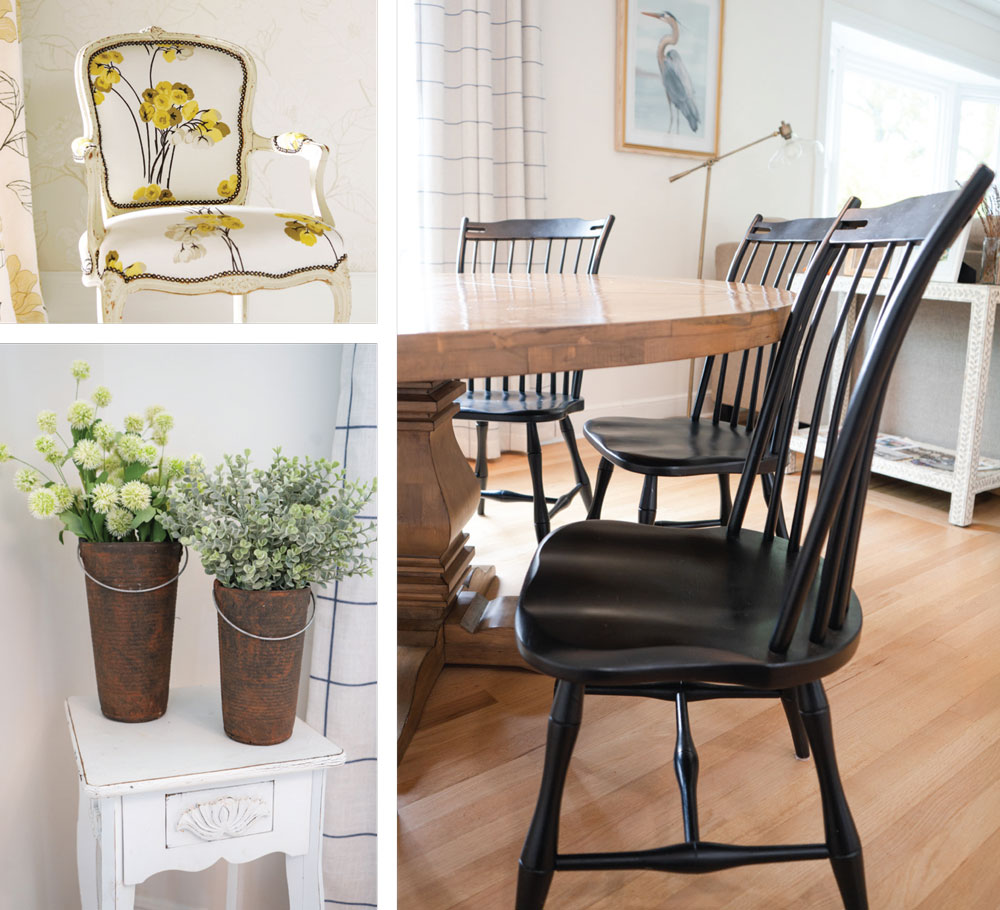 Bottom Left and Right Photos: James River Media
Bottom Left and Right Photos: James River Media
If you love DIY projects, refinishing antiques and vintage pieces will give you the satisfaction of reviving their beauty and extending their longevity. When you refinish furniture, you strip the furniture’s finish, sand it, stain it, and, in many cases, paint it with a new color. Try reupholstering antique and vintage seating with contemporary fabrics: Bold stripes enhance the shape of a rocking chair or settee while florals soften the lines of straight-back chairs.
Your style & story
When you mix antique, vintage and contemporary furnishings and accents in your home, there are no hard and fast rules to follow. But with the help of some classic design notions like balance, proportion and scale, you can display your treasured heirlooms and vintage prizes amidst your contemporary furnishings and create a fresh, harmonious look that reflects your style and your story. ✦
“granny chic”, antique, family heirlooms, furnishings, handcrafted antiques, modern, modern elements, refinishing, Upholstery Fabrics, vintage
